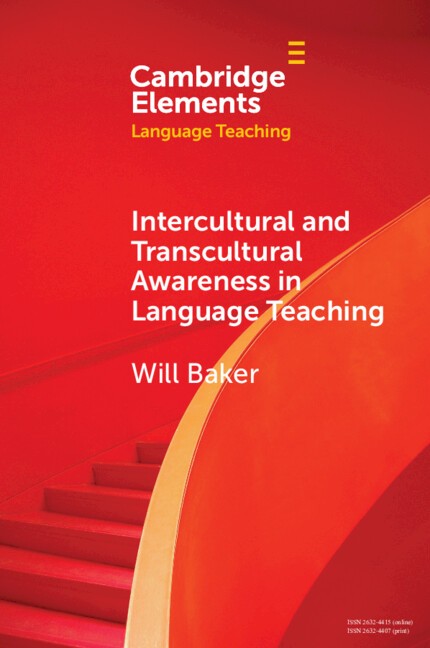Home >
Cambridge Elements in Language Teaching >
Intercultural and Transcultural Awareness in Language Teaching (Paperback)
Cambridge Elements in Language Teaching
Intercultural and Transcultural Awareness in Language Teaching (Paperback)
ISBN: 9781108812689
Series: Cambridge Elements in Language Teaching
Intercultural and Transcultural Awareness in Language Teaching (Paperback)
Cambridge Elements in Language Teaching Intercultural and Transcultural Awareness in Language Teaching (Paperback) Media > Books > Non-Fiction > Education Books Now available| Order Below |
ISBN
9781108812689 (10-digit ISBN: 1108812686)
- Description
- Series Description
The central aim of language teaching is typically to prepare learners to communicate through the language learnt. However, much current language teaching theory and practice is based on a simplistic view of communication that fails to match the multilingual and intercultural reality of the majority of second language (L2) use. This Element examines the relationship between language and culture through an L2 in intercultural and transcultural communication. It puts forward the argument that we need to go beyond communicative competence in language teaching and focus instead on intercultural and transcultural awareness. Implications for pedagogic practice are explored including intercultural and transcultural language education.
Language teaching as a field of study straddles the disciplines of education and applied linguistics (and at times other disciplines such as applied psychology and applied sociology). As societies have become increasingly mobile, language teaching practices have changed to keep pace with changing learners’ needs. Globalisation has led to dramatic changes in language pedagogies, both in terms of the rise of global lingua franca such as English, Spanish, Chinese, and Arabic, as well as issues surrounding language teaching in immigrant communities.
As language teaching has developed as a distinct academic field, some scholars have observed a widening gap between researchers and practitioners, accompanied by limited exposure to research by teachers, and a disconnect between professional and academic publications. This elements series aims to close this gap by allying research with language teaching practices, in its exploration of research-informed pedagogy, and pedagogy-informed research. The series builds upon a rich history of pedagogical research in its exploration of new insights within the field of language teaching.
As language teaching has developed as a distinct academic field, some scholars have observed a widening gap between researchers and practitioners, accompanied by limited exposure to research by teachers, and a disconnect between professional and academic publications. This elements series aims to close this gap by allying research with language teaching practices, in its exploration of research-informed pedagogy, and pedagogy-informed research. The series builds upon a rich history of pedagogical research in its exploration of new insights within the field of language teaching.
The central aim of language teaching is typically to prepare learners to communicate through the language learnt. However, much current language teaching theory and practice is based on a simplistic view of communication that fails to match the multilingual and intercultural reality of the majority of second language (L2) use. This Element examines the relationship between language and culture through an L2 in intercultural and transcultural communication. It puts forward the argument that we need to go beyond communicative competence in language teaching and focus instead on intercultural and transcultural awareness. Implications for pedagogic practice are explored including intercultural and transcultural language education.
As language teaching has developed as a distinct academic field, some scholars have observed a widening gap between researchers and practitioners, accompanied by limited exposure to research by teachers, and a disconnect between professional and academic publications. This elements series aims to close this gap by allying research with language teaching practices, in its exploration of research-informed pedagogy, and pedagogy-informed research. The series builds upon a rich history of pedagogical research in its exploration of new insights within the field of language teaching.
Series Description
Language teaching as a field of study straddles the disciplines of education and applied linguistics (and at times other disciplines such as applied psychology and applied sociology). As societies have become increasingly mobile, language teaching practices have changed to keep pace with changing learners’ needs. Globalisation has led to dramatic changes in language pedagogies, both in terms of the rise of global lingua franca such as English, Spanish, Chinese, and Arabic, as well as issues surrounding language teaching in immigrant communities.As language teaching has developed as a distinct academic field, some scholars have observed a widening gap between researchers and practitioners, accompanied by limited exposure to research by teachers, and a disconnect between professional and academic publications. This elements series aims to close this gap by allying research with language teaching practices, in its exploration of research-informed pedagogy, and pedagogy-informed research. The series builds upon a rich history of pedagogical research in its exploration of new insights within the field of language teaching.
EASY ORDER FORM
PRICES LISTED INCLUDE CONSUMPTION TAX
Price Before Tax:
¥3,630 ¥2,904 ∼ 20% OFF!


